What can be said about Vvoa Ransomware
The ransomware known as Vvoa Ransomware is categorized as a severe threat, due to the amount of harm it may cause. If you have never heard of this type of malware until now, you may be in for a surprise. Powerful encryption algorithms are used by ransomware to encrypt files, and once they’re locked, you’ll not be able to open them. File encoding malicious software is so dangerous because file decryption is not possible in every case. 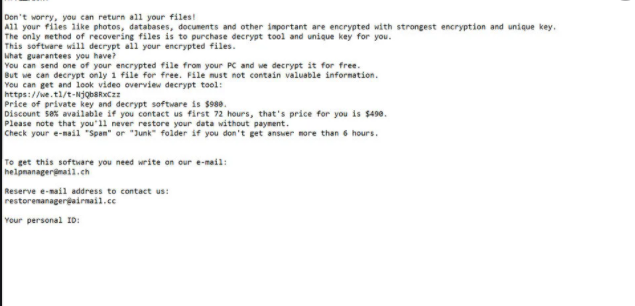
You will also be offered to buy a decryption tool for a certain amount of money, but there are a couple of reasons why this option is not recommended. First of all, paying won’t ensure that files are restored. What is preventing crooks from just taking your money, and not giving a way to decode data. You ought to also keep in mind that the money will be used for future malware projects. Do you really want to be a supporter of criminal activity that does damage worth billions of dollars. People are attracted to easy money, and when people pay the ransom, they make the ransomware industry attractive to those kinds of people. Consider buying backup with that money instead because you could end up in a situation where data loss is a possibility again. You could then simply uninstall Vvoa Ransomware and recover data. You may find information on how to secure your device from an infection in the below paragraph, in case you’re unsure about how the ransomware managed to infect your system.
Vvoa Ransomware distribution ways
You may commonly see ransomware added to emails or on suspicious download site. Seeing as these methods are still rather popular, that means that people are pretty negligent when they use email and download files. More sophisticated methods could be used as well, although not as frequently. All hackers have to do is attach a malicious file to an email, write some type of text, and pretend to be from a credible company/organization. Those emails often talk about money because that’s a sensitive topic and people are more prone to be impulsive when opening emails talking about money. Frequently, cyber crooks pretend to be from Amazon, with the email informing you that there was suspicious activity in your account or a purchase was made. There are certain things you need to look out for before you open files attached to emails. First of all, if you don’t know the sender, look into them before you open the attachment. Checking the sender’s email address is still essential, even if you are familiar with the sender. The emails also frequently contain grammar errors, which tend to be quite noticeable. Another pretty obvious sign is the lack of your name in the greeting, if a legitimate company/sender were to email you, they would definitely use your name instead of a general greeting, like Customer or Member. Infection could also be done by using unpatched vulnerabilities found in computer programs. Software comes with certain weak spots that could be exploited for malicious software to enter a computer, but vendors fix them soon after they are discovered. However, judging by the amount of computers infected by WannaCry, clearly not everyone rushes to install those patches. It is recommended that you update your software, whenever a patch is released. If you think the alerts about updates troublesome, they can be set up to install automatically.
How does Vvoa Ransomware act
Soon after the file encoding malware infects your system, it’ll look for certain file types and once it has identified them, it’ll lock them. Even if infection wasn’t obvious initially, you’ll certainly know something is wrong when files do not open as they should. Files that have been encrypted will have an extension attached to them, which commonly assist people in recognizing which ransomware they are dealing with. It ought to be mentioned that, it’s not always possible to decode data if powerful encryption algorithms were used. You’ll see a ransom note placed in the folders containing your files or it’ll show up in your desktop, and it ought to explain that your files have been encrypted and how you may recover them. What they will propose to you is to use their decryptor, which won’t be free. The note ought to display the price for a decryptor but if that’s not the case, you’d have to contact hackers via their given email address to find out how much you would have to pay. For the reasons we have mentioned above, paying isn’t the option malware specialists recommend. Only think about paying when you have tried everything else. Maybe you have just forgotten that you’ve made copies of your files. Or maybe a free decryption tool has been developed. A free decryptors might be available, if someone was able to crack the ransomware. Take that option into account and only when you’re sure a free decryption utility is unavailable, should you even think about paying. Using part of that money to purchase some kind of backup might turn out to be more beneficial. If backup was created before the infection invaded, you might perform data recovery after you delete Vvoa Ransomware virus. Now that you how how much damage this type of threat may do, do your best to avoid it. You essentially have to always update your programs, only download from safe/legitimate sources and stop randomly opening email attachments.
How to remove Vvoa Ransomware virus
If the is still present on your system, you’ll have to acquire an anti-malware software to terminate it. When attempting to manually fix Vvoa Ransomware virus you may bring about additional damage if you are not computer-savvy. Instead, using an anti-malware utility wouldn’t endanger your computer further. It could also prevent future ransomware from entering, in addition to helping you remove this one. Find which malware removal program is most suitable for you, install it and authorize it to execute a scan of your computer so as to locate the threat. Keep in mind that, a malware removal program isn’t capable of restoring. After the file encrypting malware is fully eliminated, it’s safe to use your device again.
Offers
Download Removal Toolto scan for Vvoa RansomwareUse our recommended removal tool to scan for Vvoa Ransomware. Trial version of provides detection of computer threats like Vvoa Ransomware and assists in its removal for FREE. You can delete detected registry entries, files and processes yourself or purchase a full version.
More information about SpyWarrior and Uninstall Instructions. Please review SpyWarrior EULA and Privacy Policy. SpyWarrior scanner is free. If it detects a malware, purchase its full version to remove it.

WiperSoft Review Details WiperSoft (www.wipersoft.com) is a security tool that provides real-time security from potential threats. Nowadays, many users tend to download free software from the Intern ...
Download|more


Is MacKeeper a virus? MacKeeper is not a virus, nor is it a scam. While there are various opinions about the program on the Internet, a lot of the people who so notoriously hate the program have neve ...
Download|more


While the creators of MalwareBytes anti-malware have not been in this business for long time, they make up for it with their enthusiastic approach. Statistic from such websites like CNET shows that th ...
Download|more
Quick Menu
Step 1. Delete Vvoa Ransomware using Safe Mode with Networking.
Remove Vvoa Ransomware from Windows 7/Windows Vista/Windows XP
- Click on Start and select Shutdown.
- Choose Restart and click OK.

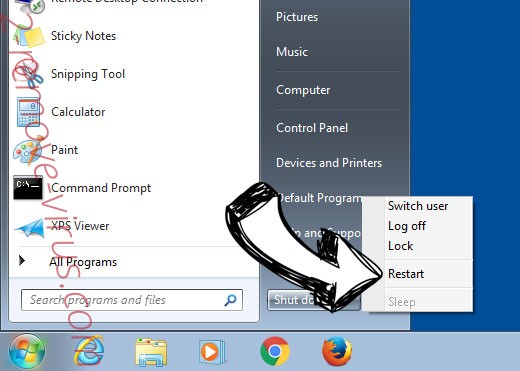
- Start tapping F8 when your PC starts loading.
- Under Advanced Boot Options, choose Safe Mode with Networking.

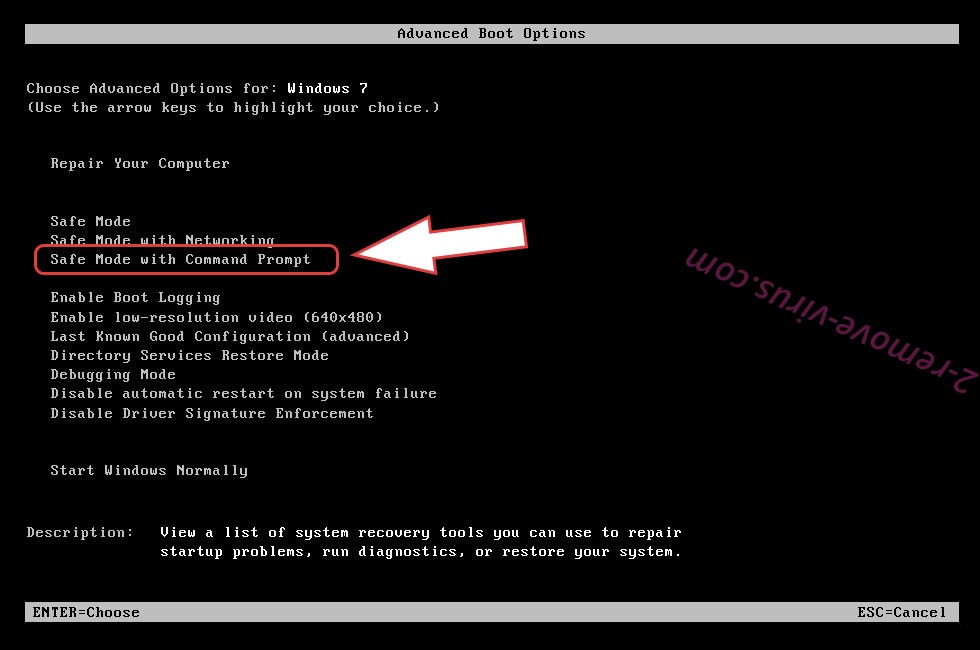
- Open your browser and download the anti-malware utility.
- Use the utility to remove Vvoa Ransomware
Remove Vvoa Ransomware from Windows 8/Windows 10
- On the Windows login screen, press the Power button.
- Tap and hold Shift and select Restart.

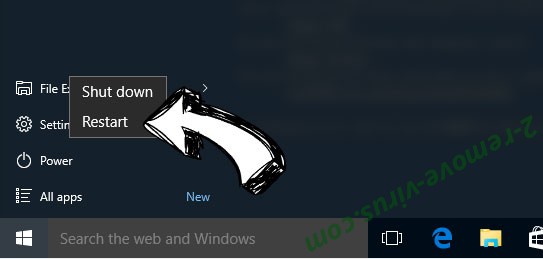
- Go to Troubleshoot → Advanced options → Start Settings.
- Choose Enable Safe Mode or Safe Mode with Networking under Startup Settings.

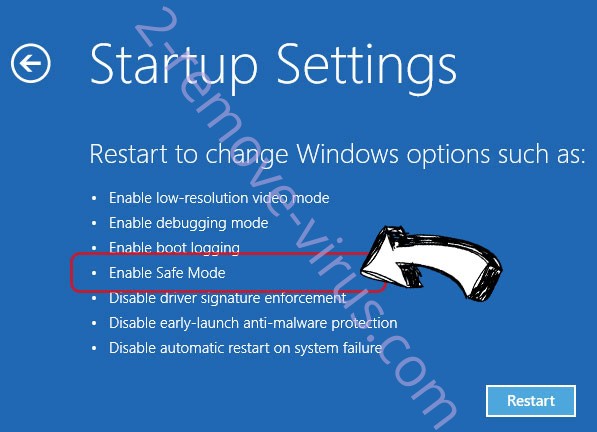
- Click Restart.
- Open your web browser and download the malware remover.
- Use the software to delete Vvoa Ransomware
Step 2. Restore Your Files using System Restore
Delete Vvoa Ransomware from Windows 7/Windows Vista/Windows XP
- Click Start and choose Shutdown.
- Select Restart and OK


- When your PC starts loading, press F8 repeatedly to open Advanced Boot Options
- Choose Command Prompt from the list.

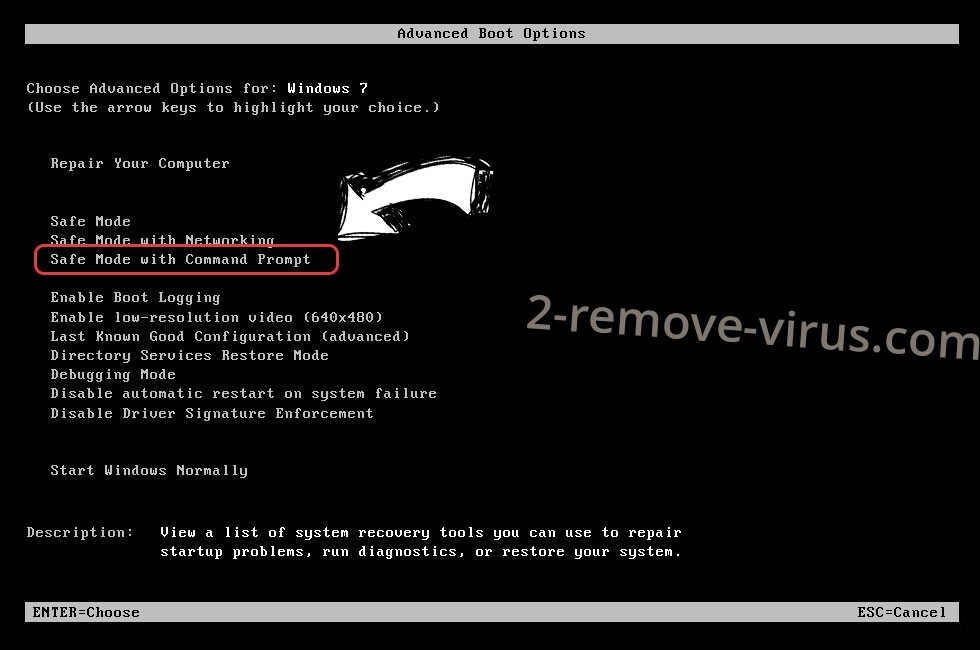
- Type in cd restore and tap Enter.

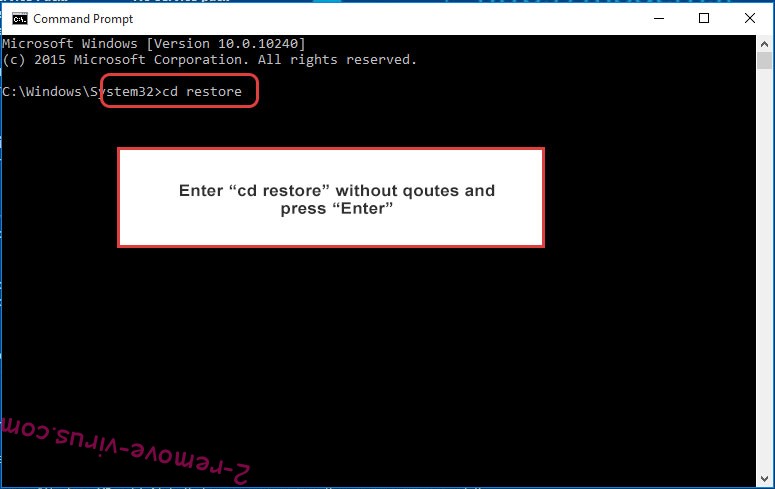
- Type in rstrui.exe and press Enter.

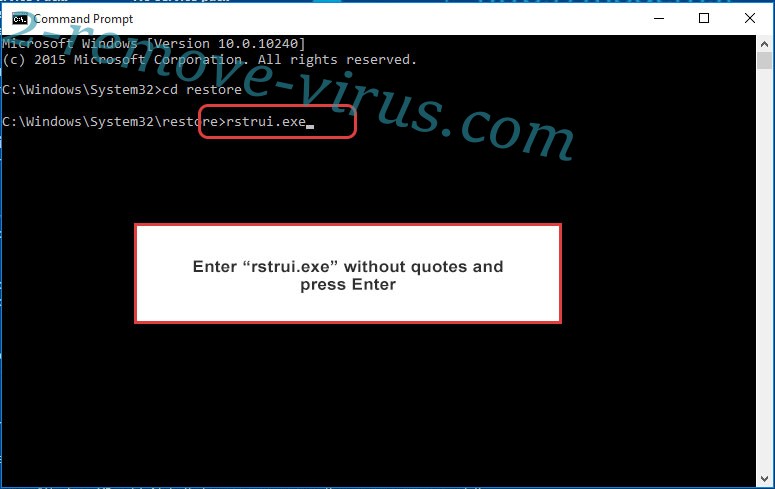
- Click Next in the new window and select the restore point prior to the infection.

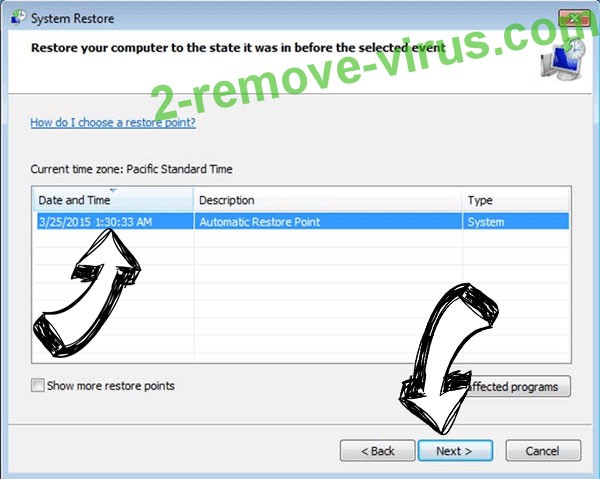
- Click Next again and click Yes to begin the system restore.

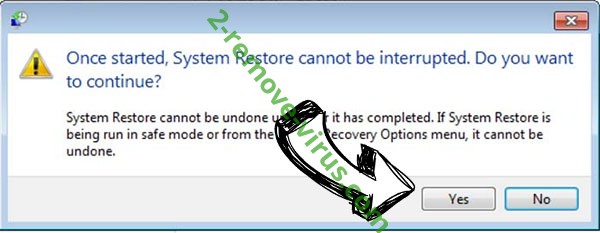
Delete Vvoa Ransomware from Windows 8/Windows 10
- Click the Power button on the Windows login screen.
- Press and hold Shift and click Restart.


- Choose Troubleshoot and go to Advanced options.
- Select Command Prompt and click Restart.

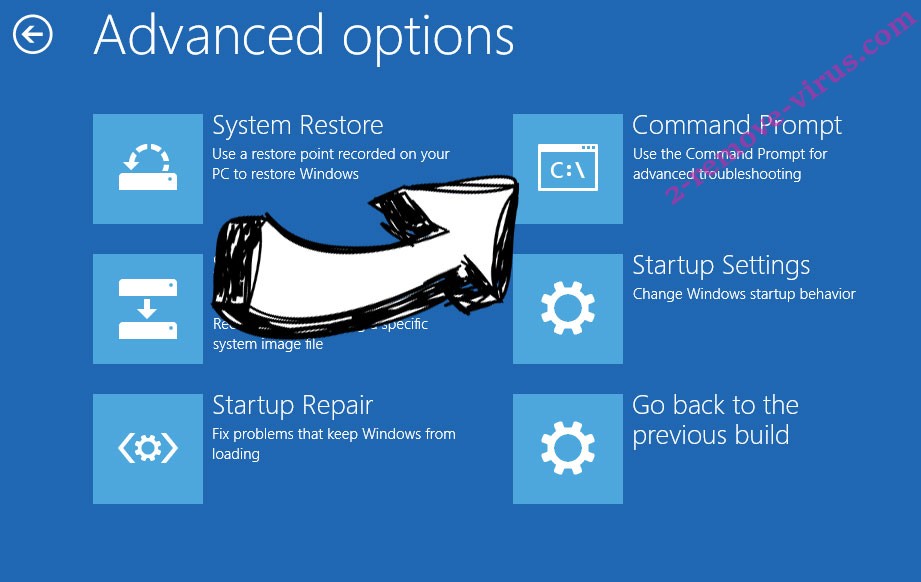
- In Command Prompt, input cd restore and tap Enter.


- Type in rstrui.exe and tap Enter again.


- Click Next in the new System Restore window.

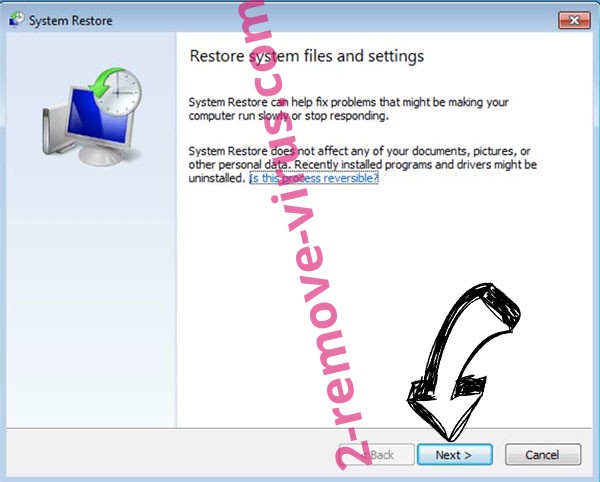
- Choose the restore point prior to the infection.


- Click Next and then click Yes to restore your system.


Site Disclaimer
2-remove-virus.com is not sponsored, owned, affiliated, or linked to malware developers or distributors that are referenced in this article. The article does not promote or endorse any type of malware. We aim at providing useful information that will help computer users to detect and eliminate the unwanted malicious programs from their computers. This can be done manually by following the instructions presented in the article or automatically by implementing the suggested anti-malware tools.
The article is only meant to be used for educational purposes. If you follow the instructions given in the article, you agree to be contracted by the disclaimer. We do not guarantee that the artcile will present you with a solution that removes the malign threats completely. Malware changes constantly, which is why, in some cases, it may be difficult to clean the computer fully by using only the manual removal instructions.
